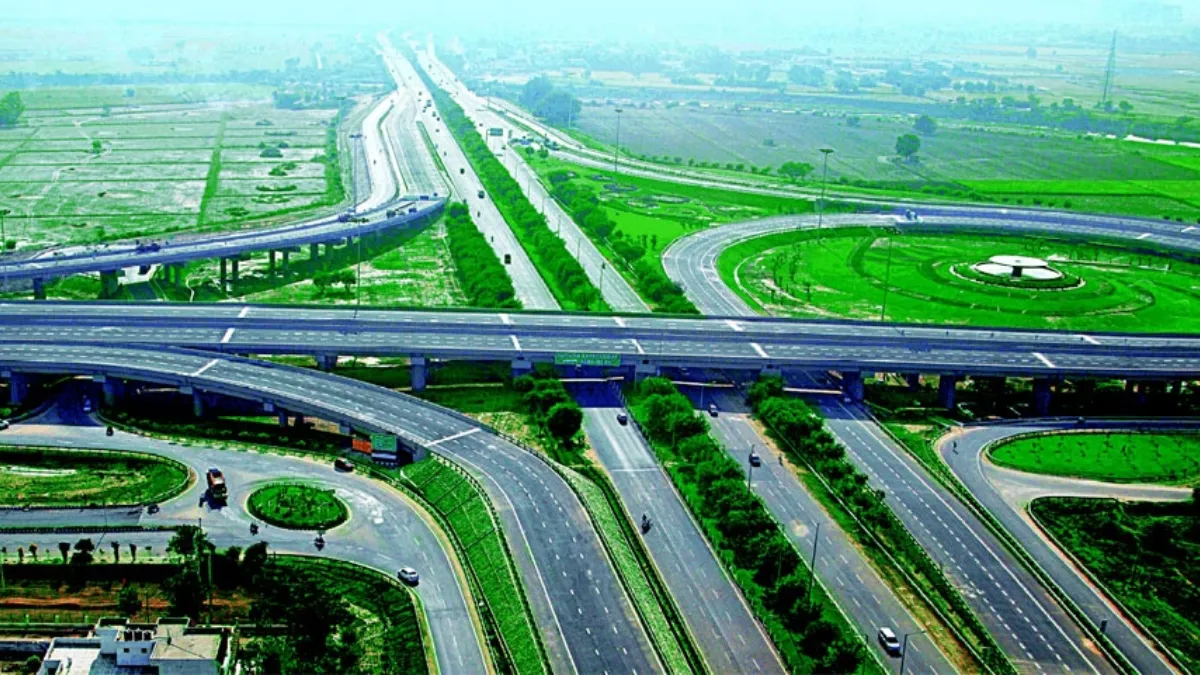- By Yashashvi Tak
- Thu, 24 Apr 2025 11:02 AM (IST)
- Source:JND
The second expressway connecting Noida and Greater Noida will be a six-lane elevated road, stretching the Okhla Barrage near Kalindi Kunj to the Yamuna Expressway with the Hindon-Yamuna doab. The Uttar Pradesh government has tasked the Uttar Pradesh Expressways Industrial Development Authority (UPEIDA) with executing the riverside bypass project.
The Noida Authority had earlier been considering two proposed alignments for the new road, an eight-lane ground-level route or a six-lane elevated corridor. The road is intended to provide direct connectivity for commuters traveling from Delhi and Faridabad to the Noida International Airport, which is set to begin operations this year.
Officials stated that widespread illegal constructions and farmhouses on the Yamuna floodplains made the elevated road a more viable option. A ground-level road, they explained, would not only encounter regulatory challenges but also risk encouraging further encroachments in this flood-prone area.
"A ground-level road would not have met the capacity or regulatory requirements. So, an elevated six-lane is the only viable solution," Noida Authority CEO Lokesh M told media.
The revised alignment now proposes to connect sector 168 with a 75-metre-wide road between sector 149A and 150. Officials said that some design modifications are likely to be included in the final draft plan.
Initially, the Noida Authority aimed to involve the National Highways Authority of India (NHAI), but this required declaring the road a national highway, a plan that ultimately did not materialise.
At the board meeting held on March 28, Uttar Pradesh Chief Secretary and Board Chairperson Manoj Kumar Singh suggested that if the NHAI plan falls through, the Noida, Greater Noida, and Yamuna Expressway authorities should jointly take the initiative to construct the road. He also directed the Noida Authority to take the lead in executing the project.
"The proposed expressway will be executed by UPEIDA, a nodal agency known for executing major expressways like Lucknow-Agra Expressway and Purvanchal Expressway, after the irrigation department issues a no-objection certificate. The project's cost is to be shared by all three development authorities. A joint meeting will be held soon to finalise the execution plan," the CEO said.
With the majority of the 30-km-long elevated road expected to pass through Noida, the Noida Authority is likely to bear the largest share of the project’s cost. Designed as an alternative to the 25-km Noida Expressway, the riverside bypass will play a crucial role in managing the growing traffic between Delhi and Noida, driven by rapid expansion in residential and commercial developments, as well as the upcoming international airport.
Currently, Noida and Greater Noida are connected by a single expressway that merges into the Yamuna Expressway at Zero Point. The new link aims to ease congestion for vehicles traveling from Delhi and Gurgaon toward Agra, Lucknow, and beyond. Officials believe it will also help reduce pollution by minimizing vehicle idling in traffic bottlenecks.
Additionally, the Noida Authority is planning a cloverleaf interchange near the Mahamaya Flyover to link the under-construction Chilla Elevated Road with the new expressway. Modeled after the cloverleaf interchange near AIIMS in Delhi, this design will facilitate smooth transitions between the two corridors.
The 5.9 km long Chill Elevated Road, a six-lane corridor, is designed to ease congestion at Noida’s entry point. Once operational, it will offer direct access to the Noida Expressway for vehicles coming from Mayur Vihar and East Delhi. When integrated with the new elevated corridor, the combined network will facilitate seamless travel between Delhi, Haryana and major cities such as Agra and Lucknow with the Yamuna and Lucknow expressways.
